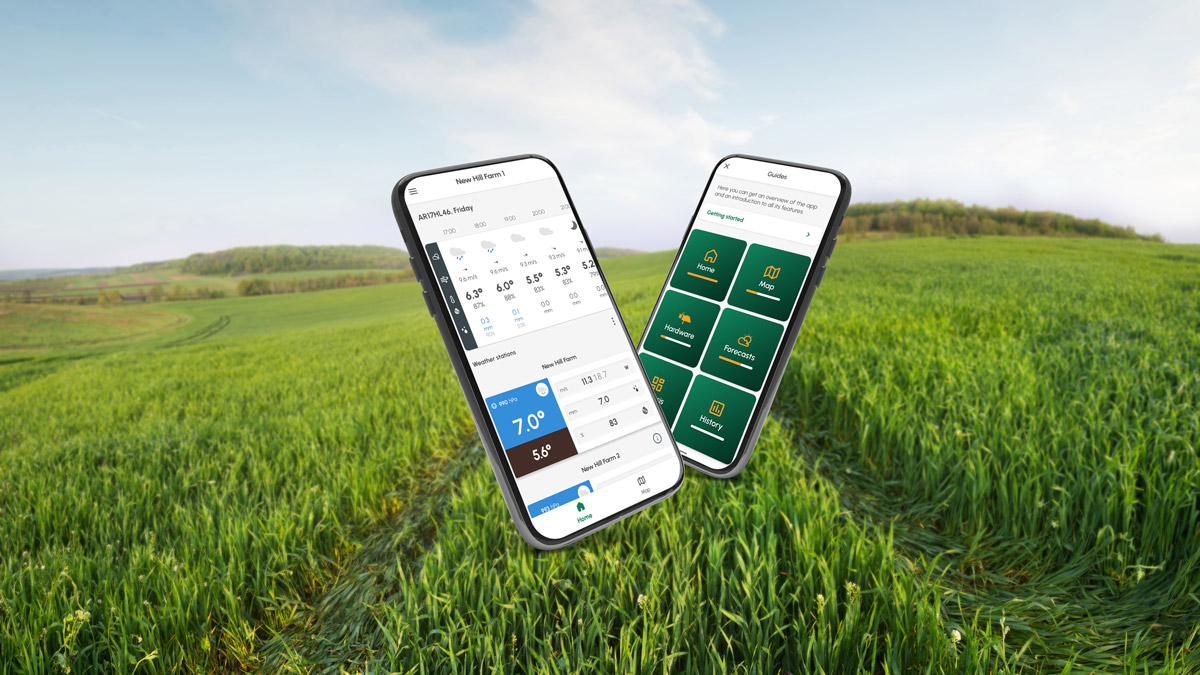Unlock the potential of your seeds with hyperlocal weather data

Every spring, farmers face a delicate balance between planting early to get as many good growing days as possible and planting later when it’s warmer to give the seeds the best conditions to germinate. Somewhere in this complex dynamic lies a sweet spot where the seeds have a great germination rate due without wasting any heat days that could contribute to their growth.
But finding the right time to sow isn’t always easy. It’s one thing to get your seeds in the ground, it’s a whole other thing to get them to germinate. Because seed germination is a delicate process that’s heavily dependent on the local weather conditions. And since the weather changes from year to year, there isn’t a standard day to sow to get the best results.
Seed germination depends on three essential weather conditions: air, precipitation, and temperature. Air provides the oxygen needed for the seed’s metabolic processes while precipitation provides the water necessary for softening the seed coat and embryo, making it possible for the roots to emerge out into the soil. And warmth triggers enzyme activity and kickstarts the seed’s metabolism.
Among these factors, temperature plays a crucial role as it underpins the entire germination process. Each crop species has an optimal temperature range for germination, and sowing outside of this range can harm germination rates and seedling development. Low temperatures can result in dormant or dead seeds, so finding a period with stable soil temperature over a couple of days gives the seed’s the best chance.
While adequate water is important for germination, excessive moisture can slow or stop the process. Waterlogged soil deprives seeds of oxygen which can lead to seed rot and significantly reduce germination rates. In addition, if the newly sown seeds are wetted and rapidly cooled within the first 48 hours, the risk of imbibitional chilling increases. This can lead to poor emergence, leafing out underground, twisting leaves, low plant vitality, and seed death.
The key to a successful and rapid germination is stable, high soil temperature that matches the seed’s requirements and a moist but not saturated seedbed.
Getting local soil temperature readings over a longer period of time to check its stability is essential, but hardly something most people have access to in the same way as you do with air temperature. And that’s without taking into account how difficult it is to find accurate forecasts that predict rainfall.
What farmers need is a tool that provides more accurate forecasts and tracks local weather conditions to find the perfect time to sow to get the highest yield with the best quality possible. Cordulus has developed one such tool.
Get the best start to your growing season
In today's data-driven world, farmers need to have access to a wealth of information, including real-time weather data. Because there’s immense value when you leverage hyperlocal weather data to provide precise insights into soil temperature and precipitation conditions at specific locations.
This granular information empowers farmers to make informed decisions about planting dates, irrigation schedules, and fertilization strategies, all tailored to the unique conditions of their fields.
In the Cordulus Farm app, the Sowing weather analysis is an easily available overview of sowing conditions. The analysis tracks the soil temperature as well as its stability over time and summarises the conditions with an intuitive green-yellow-red recommendation:

Strategic planting based on accurate soil temperature readings ensures seeds receive the warmth they need to activate their metabolism. This approach promotes rapid and uniform germination, laying the foundation for healthy seedling establishment and ultimately the best possible yield at harvest.
The difference of just a couple of days can make all the difference in the world if the seeds were planted with varying soil temperatures.
Hyperlocal weather data also guides irrigation decisions. By monitoring real-time moisture levels, farmers can determine the precise amount of irrigation required for optimal germination without overwatering or creating waterlogged conditions. This precise irrigation management fosters optimal seed germination and promotes the growth of strong, healthy seedlings.
By comprehending the delicate relationship between weather and seed germination, farmers can make informed decisions that maximize crop yield and quality. This data-driven approach empowers farmers to harness the power of nature, ensuring bountiful harvests and contributing to a sustainable and resilient agricultural sector - and it all starts with your very own weather station.

_web.jpg)


















